Dry air in your home can lead to many health problems, which is why you should grow Indoor Plants that Increase Humidity for ideal relative humidity.
Apart from delivering oxygen, houseplants also remove harmful chemicals and VOCs from indoor air. Some of these plants help in restoring moisture back into the air, which helps in maintaining ideal humidity and thwarts conditions like sore throat, respiratory problems, and wrinkled skin—interested in growing them? Here are some of the best Indoor Plants that Increase Humidity!
Check out our article on plants with health benefits here
Why Should You Grow Plants that Increase Humidity?
Except for coastal regions, whether you live in a cold climate or warm, dry air is going to hit you. In winters, indoor air naturally becomes moisture less, and the use of heaters worsens it. On the contrary, in warm climates, the use of air conditioners causes dry air. Moreover, if you live in a city, pollution and dust multiply this problem.
The research published in the International Journal of Hygiene and Environmental Health states that breathing dry air regularly can cause potential health hazards like asthma, sinusitis, and nosebleeds, bronchitis, and many other respiratory problems. It also results in skin irritation and eye problems.
One simple way to curb it down is to grow indoor plants that increase humidity. They are safe, natural, and also look beautiful while saving you from these potential health issues!
How do Plants help in Increasing Indoor Humidity?
In what is termed as Transpiration, just like we release water vapors into the air as we sweat and breathe, plants do the same. The tiny, closeable, pore-like structures on the surface of the leaves, known as stomata, release water vapors in the air, thereby increasing the humidity.
The more the plants will do the transpiration, the more will be the humidity in the surrounding. Here is the list of plants according to the transpiration rankings.
Indoor Plants that Increase Humidity
1. Areca Palm
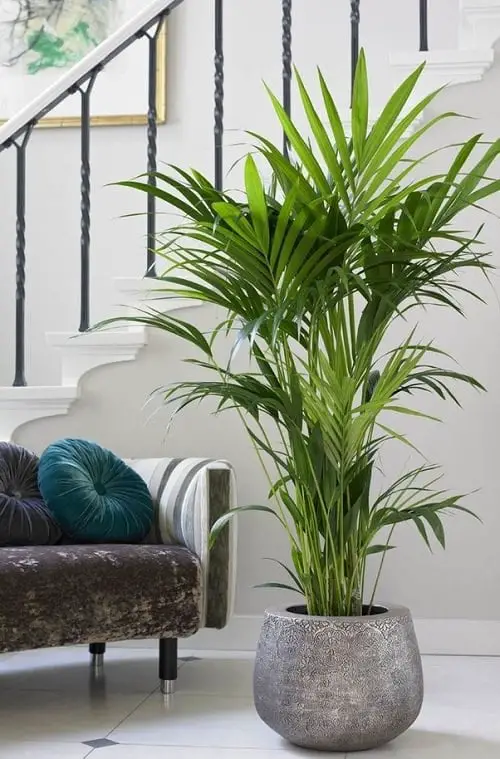
Botanical Name: Dypsis lutescens
Transpiration Rate: 10
Areca palm has one of the highest transpiration rates. A healthy plant of 5-6 feet can release up to 1 quart (946.35 ml) of water vapor in the air, every 24 hours. It’s also a NASA certified plant that removes toluene, xylene, and formaldehyde from the air.
Check out the 8 unbelievable areca palm benefits & fact here
2. Bamboo Palm
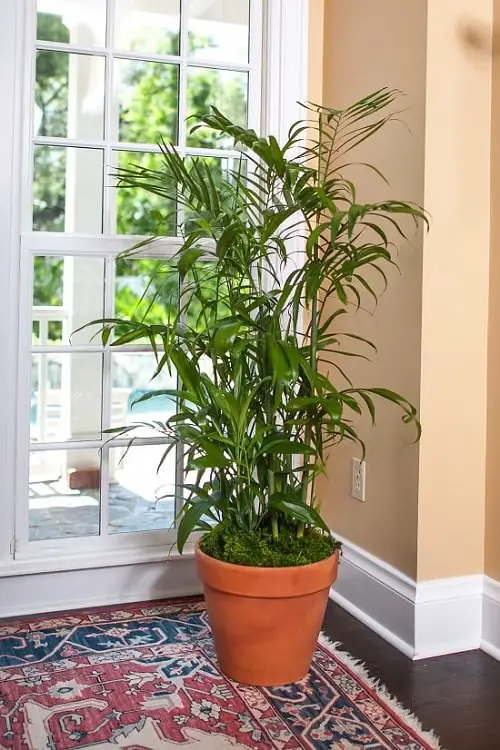
Botanical Name: Chamaedorea seifrizii
Transpiration Rate: 9
Boosting a high transpiration rate, the bamboo plant also filters benzene, formaldehyde, and other toxins from the air. Its humidity potential can further be increased by placing the plant in a saucer filled with pebbles and water.
3. Ferns
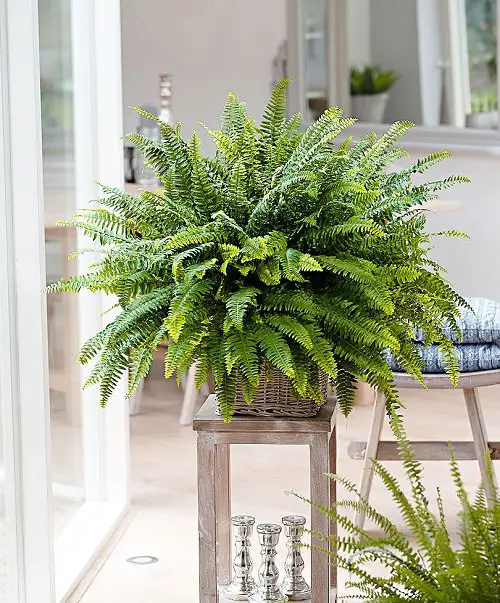
Botanical Name: Nephrolepis exaltata
Transpiration Rate: 9
Ferns are one of the top plants in the transpiration rate, they improve the humidity by restoring moisture to the atmosphere. Indoor ferns also purify indoor air by efficiently removing harmful toxins like benzene and formaldehyde.
4. Peace Lily

Botanical Name: Spathiphyllum
Transpiration Rate: 8
This beautiful flowering perennial with dramatic white modified leaves has a high transpiration rate and also helps in removing harmful indoor toxins from the air. Keep it out of reach of both cats and dogs, as it can be toxic if ingested.
Check out the fantastic peace lily benefits here
5. Florist’s Mum

Botanical Name: Chrysanthemum morifolium
Transpiration Rate: 8
According to this report, the plant plays a vital role in filtering formaldehyde, trichloroethylene, and benzene from the air. In an additional study by Wolverton & Wolverton 1993, mums can also remove ammonia and xylene from the air.
6. Lady Palm
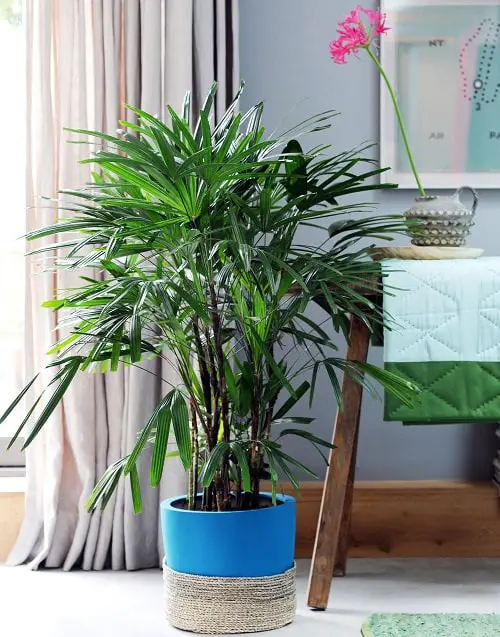
Botanical Name: Rhapis excelsa
Transpiration Rate: 8
Broadleaf lady or little lady palm is proved efficient in clearing airborne toxins, including xylene, ammonia, formaldehyde, and carbon dioxide. It not only produces more oxygen but also adds moisture into the air, making it healthier to breathe.
7. English Ivy
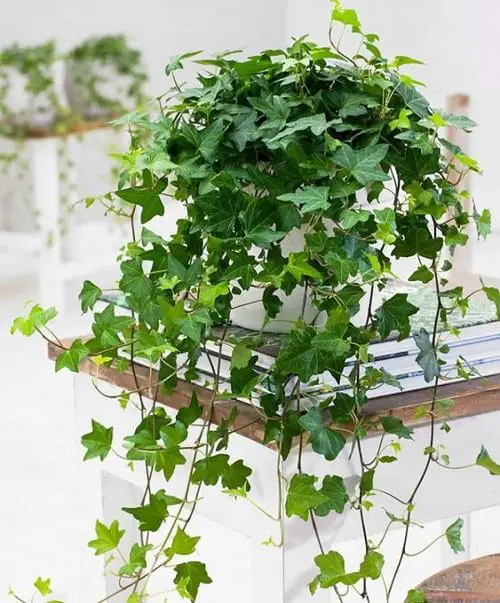
Botanical Name: Hedera helix
Transpiration Rate: 7
English Ivy releases water in the air, which can tremendously improve the humidity levels of a small room. You can plant small-leafed ivy in hanging baskets too and easily improve the air quality you breathe!
8. Rubber Plant

Botanical Name: Ficus elastica
Transpiration Rate: 7
This tropical houseplant has a high transpiration rate and is perfect in filtering indoor air. According to various studies and researches, the large thick leave of rubber plants absorbs airborne chemicals, making air harmless, moist, and fresh.
Here are some amazing benefits of rubber plants
9. Golden Pothos

Botanical Name: Epipremnum aureum
Transpiration Rate: 7
According to an experiment by NASA, it is proved that golden pothos can increase humidity. The transpiration rate is good in golden pothos and it is one of the best plants that increase humidity indoors.
Check out the amazing pothos benefits here
10. Parlor Palm
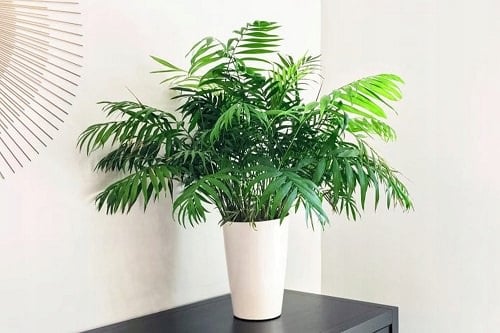
Botanical Name: Chamaedorea elegans
Transpiration Rate: 7
Parlor palm is another great plant with air purifying skills as it removes benzene and trichloroethylene from the air. This feathery plant, with a high transpiration rate, regulates humidity indoors very well.
11. Corn Plant
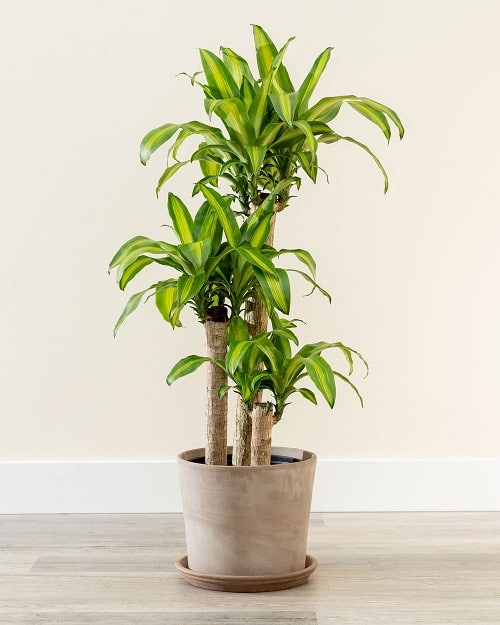
Botanical Name: Dracaena fragrans
Transpiration Rate: 7
In the total life of the corn plant, almost 99% of the water taken up by the roots is transpired away. According to research, it also helps in improving air quality, eliminating toxic compounds like xylene, benzene, and formaldehyde.
Check out these amazing dracaena benefits here
12. Dwarf Date Palm

Botanical Name: Phoenix roebelenii
Transpiration Rate: 7
Also known as pygmy date palm, this miniature version of palm trees is very easy to maintain and helps in making the air clean and breathable along with increasing humidity thanks to its high transpiration rate, the result of its dense foliage.
13. Dumb Cane
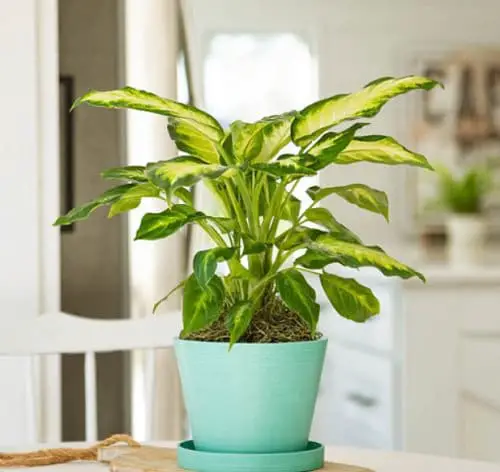
Botanical Name: Dieffenbachia
Transpiration Rate: 7
Dumb cane’s large, variegated green leaves not only look beautiful but also helps in improving air quality by removing harmful compounds. It also has a high transpiration rate by which dieffenbachia improves humidity in the air.
Check out 7 amazing dieffenbachia benefits here
14. Syngonium
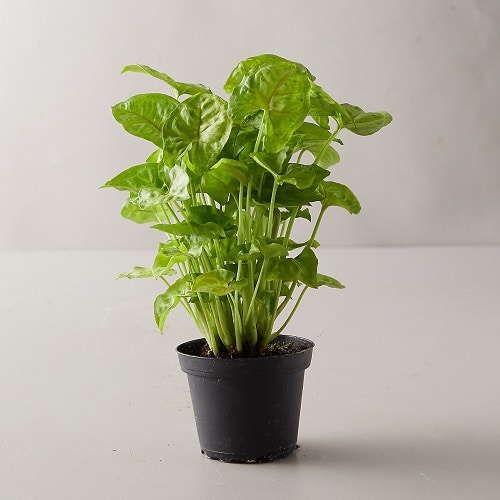
Botanical Name: Syngonium podophyllum
Transpiration Rate: 7
According to the researches conducted, this colorful foliage plant is a proven air purifier and ranks high on the list. Syngonium is also potent in diminishing airborne microbes apart from boosting humidity indoors.
15. Dwarf Umbrella Tree

Botanical Name: Schefflera
Transpiration Rate: 7
This sturdy plant is prized with the ability to eliminate toxins released into the air by cigarettes and can clear out toxic chemicals like toluene, benzene, and formaldehyde. With a high transpiration rate, it also brings humidity in the surrounding air.
16. Prayer Plant
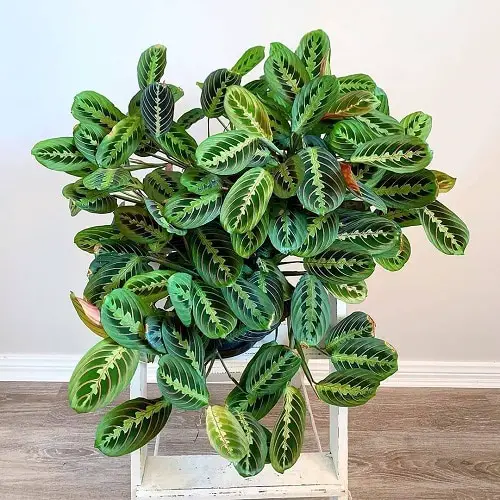
Botanical Name: Maranta Leuconeura ‘Kerchoveana’
Transpiration Rate: 7
Beautifully patterned ‘Prayer Plant’ is not much demanding and can do well in any kind of light except the direct sun. The folding leaves of this plant conserve moisture and have a good transpiration rate. It also purifies air by clearing hazardous VOCs.
17. Anthurium
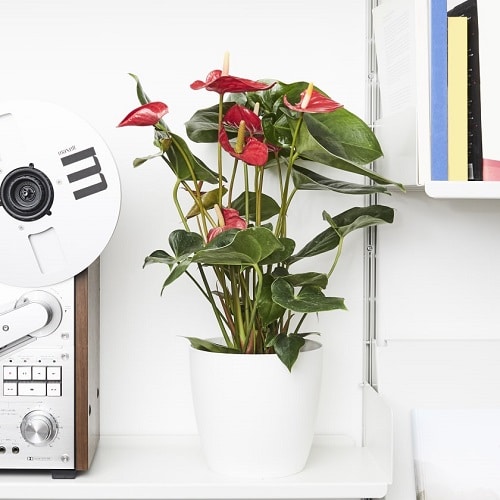
Botanical Name: Anthurium
Transpiration Rate: 7
Anthurium is one of the most potent air-purifying plants, clearing toxins from the air. The thick dark leaves absorb formaldehyde, xylene, ammonia, and toluene that are mostly present in the offices and homes.
18. Philodendron
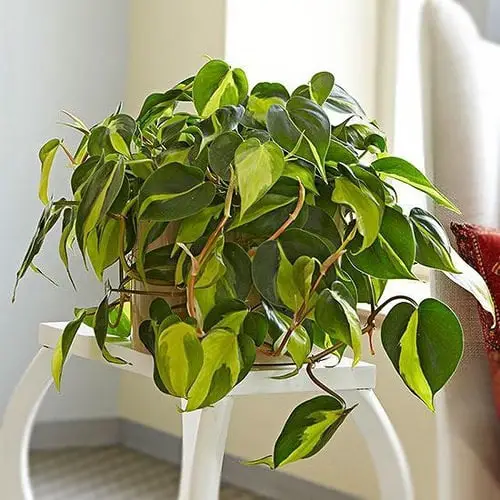
Botanical Name: Philodendron
Transpiration Rate: 6
Philodendrons are excellent in absorbing harmful chemicals from the air. You can increase the transpiration rate of the plant by lightly misting the foliage once in a week and placing it near a bright but indirect light source.
19. Spider Plant
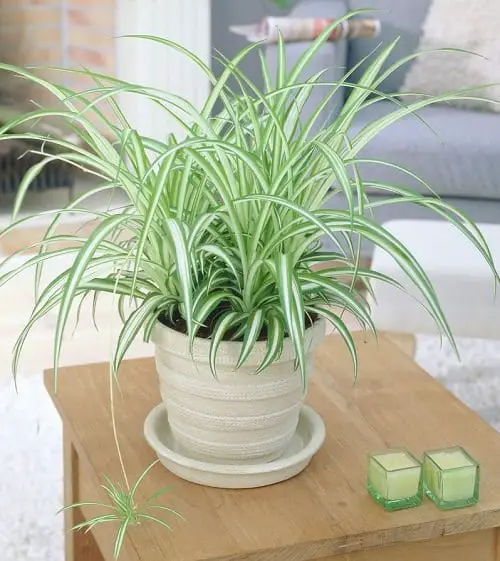
Botanical Name: Chlorophytum comosum
Transpiration Rate: 5
According to a study, evapotranspiration from the spider plant can boost humidity indoors. In this theoretical study, it has been found out that spider plants and other indoor plants placed in hospitals had a positive impact on the patients’ condition.
Check out the scientifically proven 7 spider plant benefits here
20. Jade Plant
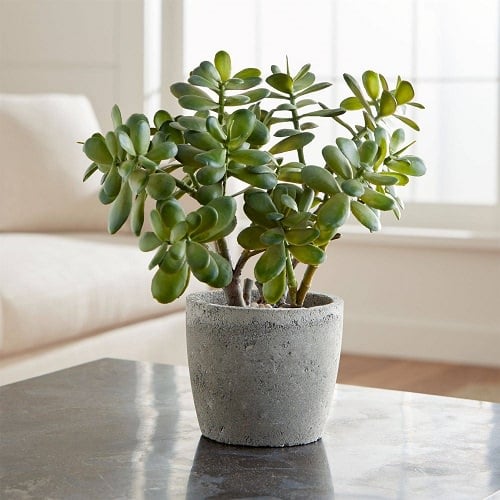
Botanical Name: Crassula ovata
Transpiration Rate: 5
In an experiment conducted, jade plants increased office humidity to 30%. According to this study, jade plants and spider plants significantly help in improve air moisture. As it’s a CAM plant, it can demonstrate evapotranspiration in the dark too.


